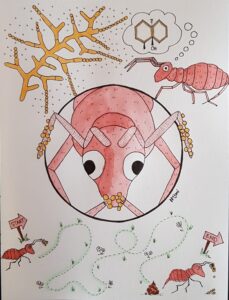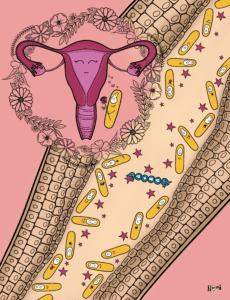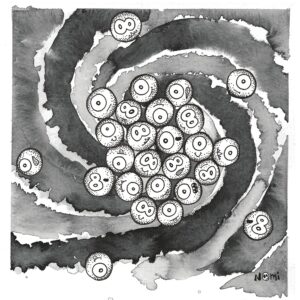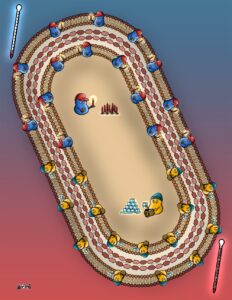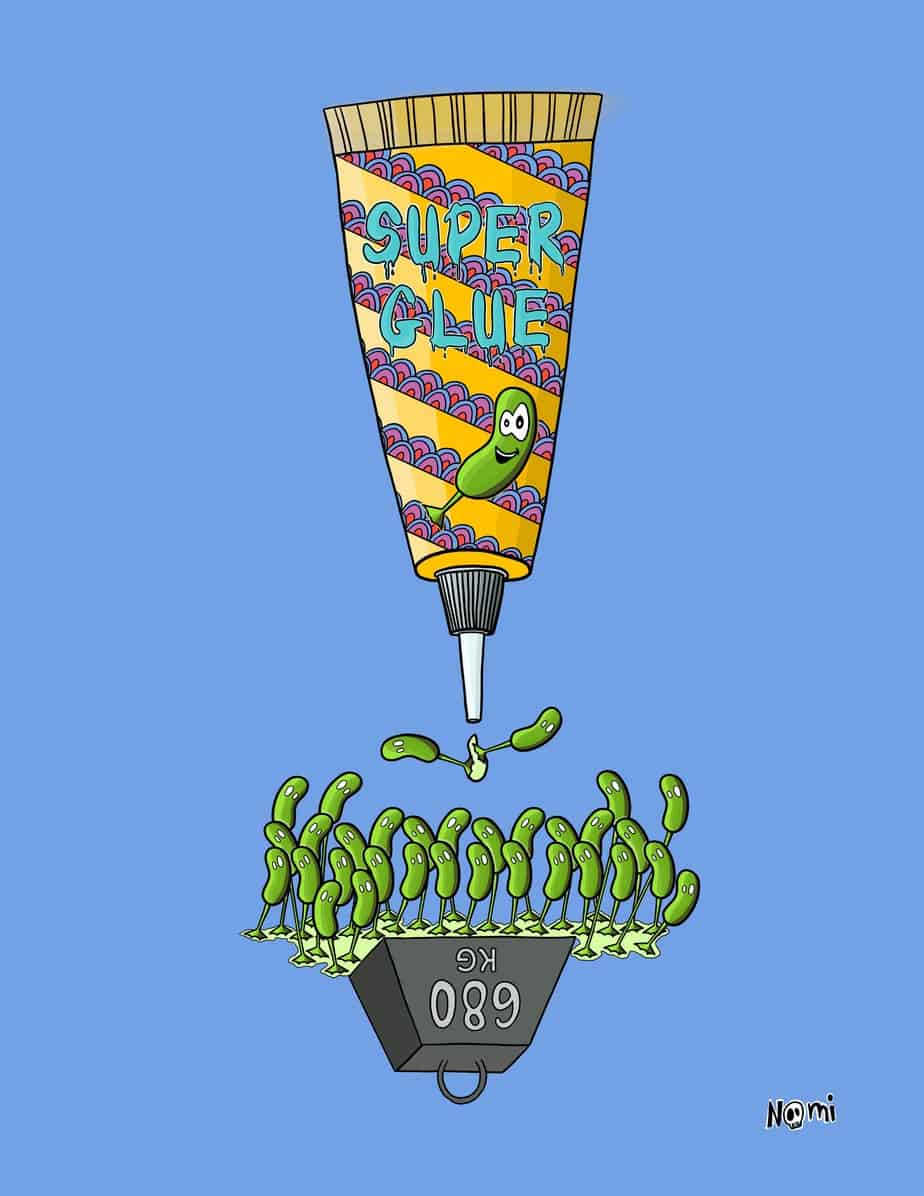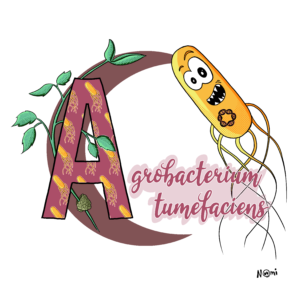You might have heard a lot about the bacteria in your gut and that your gut microbiome keeps you healthy.
Yes, the bacteria in your gut have certain superpowers that we benefit from. They help us digest food, keep us mentally and physically healthy, activate our immune system and keep out harmful pathogens.
Here, we will explore some of these fascinating aspects of a healthy gut microbiome, what it is, what it does and how you can keep its superpowers. Learn more about what a healthy gut microbiome actually means and does for you.
What is the gut microbiome?
The gut microbiome consists of all microbial communities that live in your gastrointestinal tract. In there, you can find many diverse players, like bacteria, viruses, fungi and archaebacteria. Here, we will focus on the bacterial members of our gut microbiome, but don’t forget that they all work together to achieve their goals.
Every person has their own unique gut microbiome. So, everyone – depending on their socio-economic state, diet, age, geography, drugs, sleep and other environmental substances – has their own special microbial friends. And studies showed that each person’s gut microbiome is stable over time, even after antibiotic treatment, acute intestinal infections and modified diets.
When you think about it, your gut is a very welcoming environment for most bacteria. It is always about 37 C, a lot of food from your meals and many other microbial friends to party with.
Surprisingly, many bacteria are unable to grow in the lab, so researchers still don’t know much about them. That’s because we don’t know what these gut bacteria need to grow outside of the gut. Yet, researchers found their bacterial DNA in human guts, so they must be living there, somewhere…
Our gut microbiome plays many roles in our wellbeing
In comparison to other microbial niches within our bodies, the gut microbiome is probably best characterized. However, many studies also try to characterise the microbiomes of other parts of our body, as different skin areas. Imagine different organisms living on your feet than on your hand or under your armpits, ears or even eyes.
The reason why researchers mainly study the gut microbiome is due to the accessibility of samples. The sample comes out of your body, so you can directly use it without swapping a person.
Second, the gut microbiome plays important roles in many diseases. So, a lot of research focuses on understanding the interplays between these diseases and the gut microbiome. The aim here would be to find cures or intervention therapies.
How do gut bacteria support our health?
While researchers are still trying to unravel the full impact of our gut microbiome on our health, we are understanding it better and better now. By now we know that a few important players in our gut microbiome are a sign of good health. These are Faecalibacterium, Roseburia, Lachnospiraceae, Eubacterium and Akkermansia muciniphila.
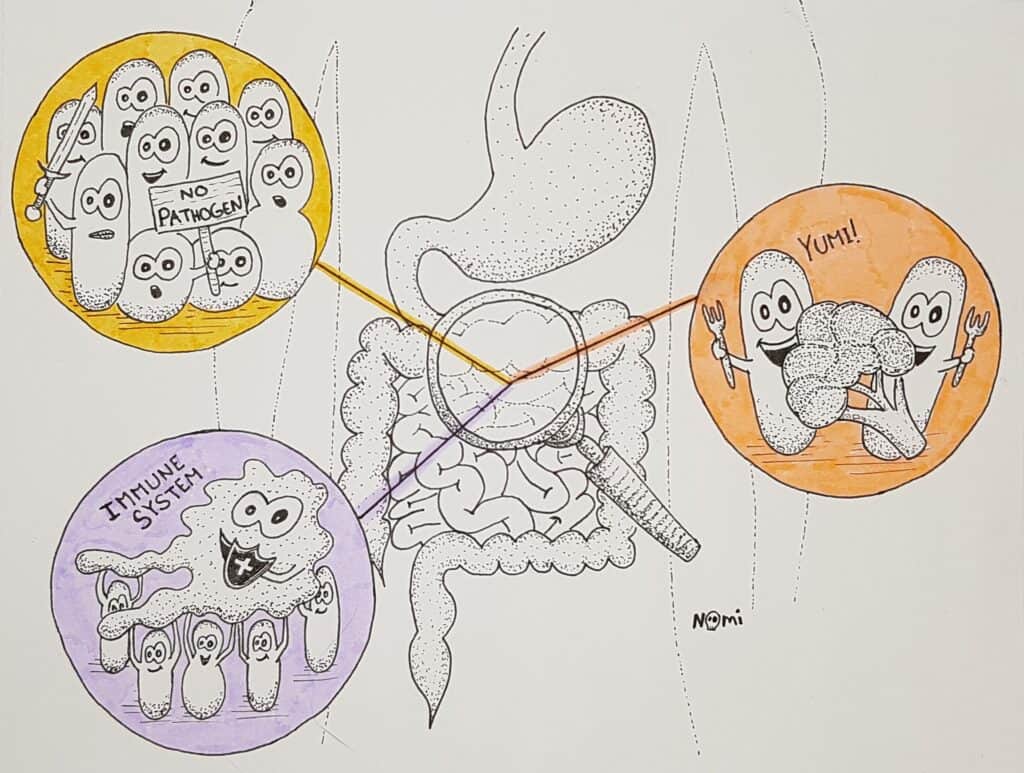
For example, our friendly gut bacteria help us in food digestion. Some of the foods that we eat, we can’t fully digest ourselves, like many complex sugars. In this case, the bacteria in our gut break down these indigestible molecules and produce compounds that we otherwise would not have.
For example, they produce gasses and certain molecules called short-chained fatty acids. While the gasses eventually make their way out of our gut, the short-chain fatty acids play important roles in our overall well being.
These molecules have a positive impact on our mental health, while they also strengthen the gut wall to keep our gut intact. Short-chain fatty acids also strengthen our immune system and help our friendly gut bacteria to grow better. On the other hand, pathogenic bacteria do not like short-chain fatty acids and have thus a harder time settling down in our guts.
Yet, our friendly gut bacteria protect us actively from harmful pathogens that can cause diseases. For example, they fight pathogenic bacteria with harmful killer weapons or produce compounds that are toxic to them.
Also, don’t forget that after a single pathogenic bacterial cell somehow made its way to our gut, it encounters billions and trillions of bacteria that already live there. So, altogether, our microbiota developed many strategies to ensure that any invading pathogenic bacterium feels unwelcome in this environment.
What does an unhealthy gut microbiome look like?
However, once in a while, our gut microbiome seems to be “out of balance”. This can often lead to disease or irritation.
While researchers still don’t know exactly, what the “normal” gut microbiome actually looks like, they are analysing the microbiomes of people with specific diseases. For this, they compare the gut bacteria from people with a disease with the gut bacteria from people that do not have that disease.
And very often, they find that healthy people have a broader variety of bacteria living in their guts. So, somehow all these different bacteria grow together and work as a team to keep us healthy.
This means, one or two bacterial species are often more present in the microbiomes of people with diseases. For example, the bacterium Faecalibacterium prausnatzi likely has beneficial effects on our gut health. However, unhealthy people often have less of this bacterium.
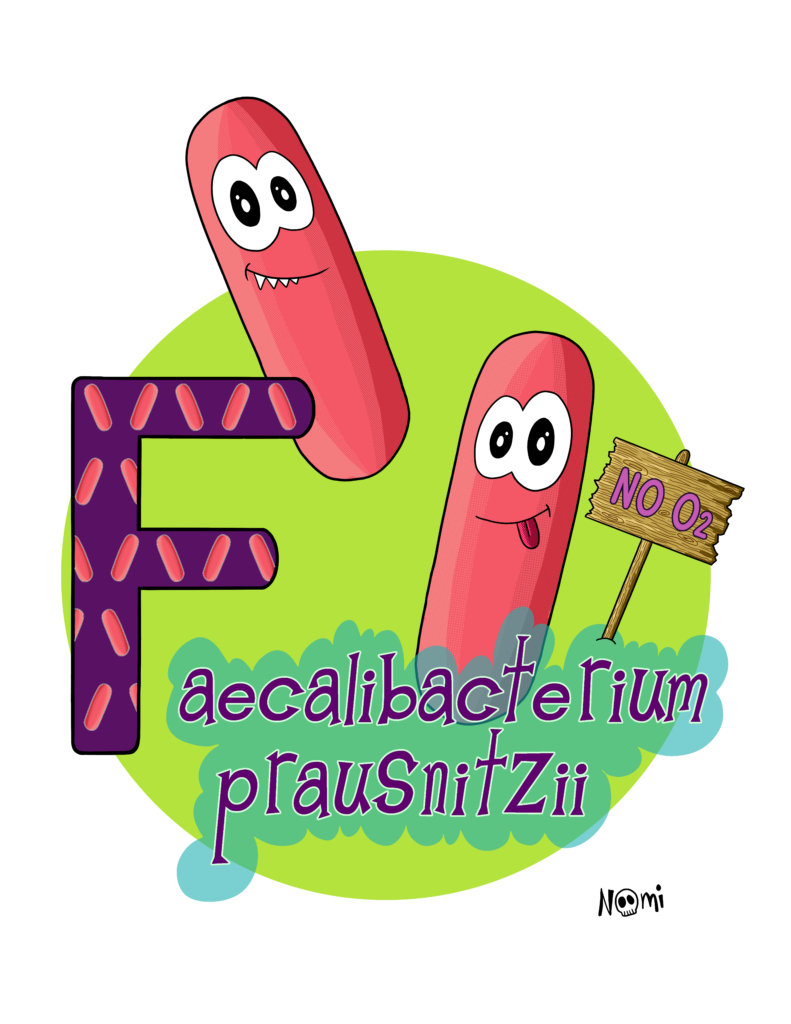
This shift in our microbial gut flora is what researchers call gut dysbiosis. However, whether this shift is the cause or the result of the disease is still not always clear.
Generally, people with gut dysbiosis have fewer bacteria that produce short-chain fatty acids. At the same time, they have more bacteria that degrade the mucus layer of the gut. And the mucus layer is what keeps our gut healthy and intact, so its degradation is usually not a good sign.
Many chronic diseases seem to be associated with gut dysbiosis. For example, type 2 diabetes, obesity, inflammatory diseases or Crohn’s disease, but also mental disorders like depression. However, the exact links are not clear yet.
How can I keep a healthy gut microbiome?
Researchers agree here: You are what you eat!
Diversity is key when it comes to our gut microbiome. This means that you want to make sure ALL of your bacteria stay happy within your gut. So, to keep your diverse bacteria with you, it is vital to eat everything.
Your aim should be to grow those bacteria within you that produce short-chain fatty acids from your food. And for that to happen, you should feed them foods that are high in complex sugars, like fibres.
Also, some studies suggest that certain food additives impact your gut bacteria negatively. These include for example emulsifiers, which work like soaps and kill certain bacteria. Also, stabilisers were shown to induce colitis in animals and artificial sweeteners led to changes in the microbial composition and glucose intolerance in mice.
Most importantly, antibiotics have drastic effects on our gut microbiota. Researchers actually think this is one of the main causes of our modern chronic diseases.
What are probiotics and prebiotics?
The FAO/WHO considers “live microorganisms which when administered in adequate amounts confer a health benefit on the host” as probiotics. These are mainly bacteria that usually live in our guts and that have been well characterised by researchers before.
Interestingly, probiotics do not stay in your gut for a long time. This means to have a long-lasting effect, you should keep eating them regularly.
For example, a probiotic strain of Escherichia coli can slow down the growth of a pathogenic Salmonella strain. Escherichia coli has transporters that specifically bind iron and uptake iron into the cell. With this mechanism, the Escherichia strain uses the iron of the environment, so that there is none left for Salmonella. Because Salmonella and all other bacteria need iron for growth, Salmonella has trouble growing and colonising the gut environment.
Foods with probiotics are for example fermented foods, like yoghurt, kefir, kimchi, kombucha or fermented vegetables. But beware here, as not all of this food actually contains approved probiotic strains.
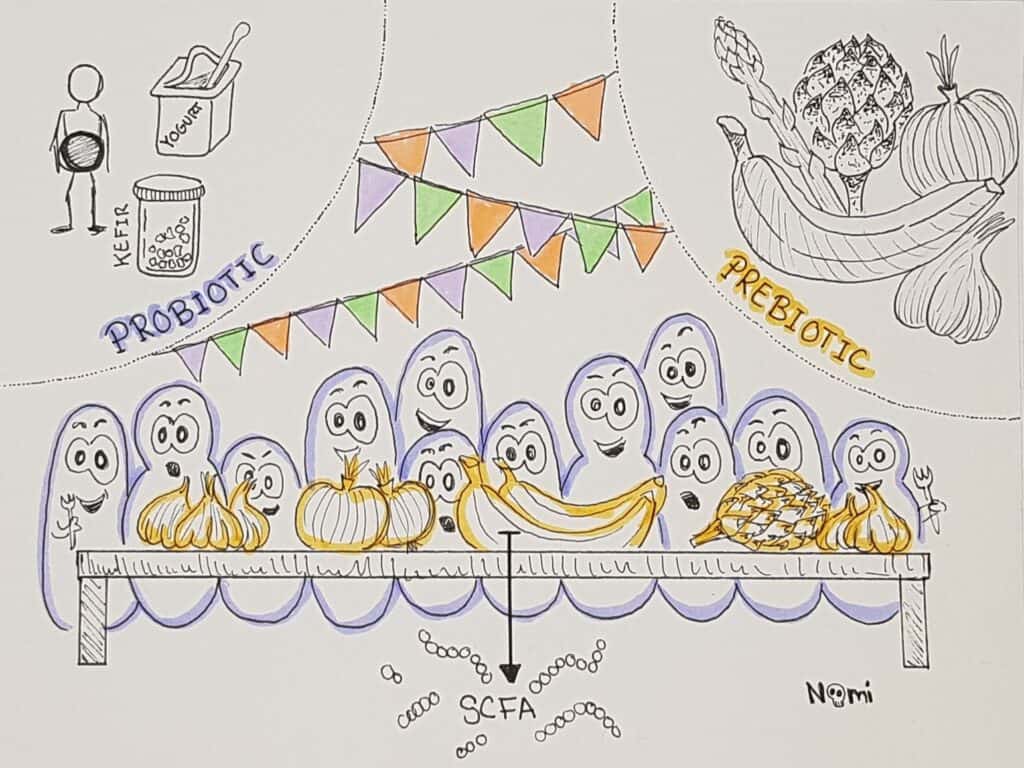
And to feed your gut bacteria the right food, make sure to eat enough prebiotics as well. They are basically the food for your gut microbiome party.
These include foods that your body cannot digest, which is why your gut bacteria take care of them. Like this, prebiotics promote the growth of probiotic bacteria in your gut. You can mostly find prebiotics in fibres as complex sugars in many vegetables, especially in asparagus, onions or garlic.
Lastly, synbiotics are combinations of probiotic bacterial strains and prebiotics. This basically means that the right bacteria come and bring their own food to your gut party.
Help your gut microbiome help you
So, by eating the right food, you can make sure the right, helpful bacteria grow and live in your gastrointestinal tract. And as a thank you for feeding them, they make sure to protect you and keep you healthy. Great bacteria and their superpowers.

